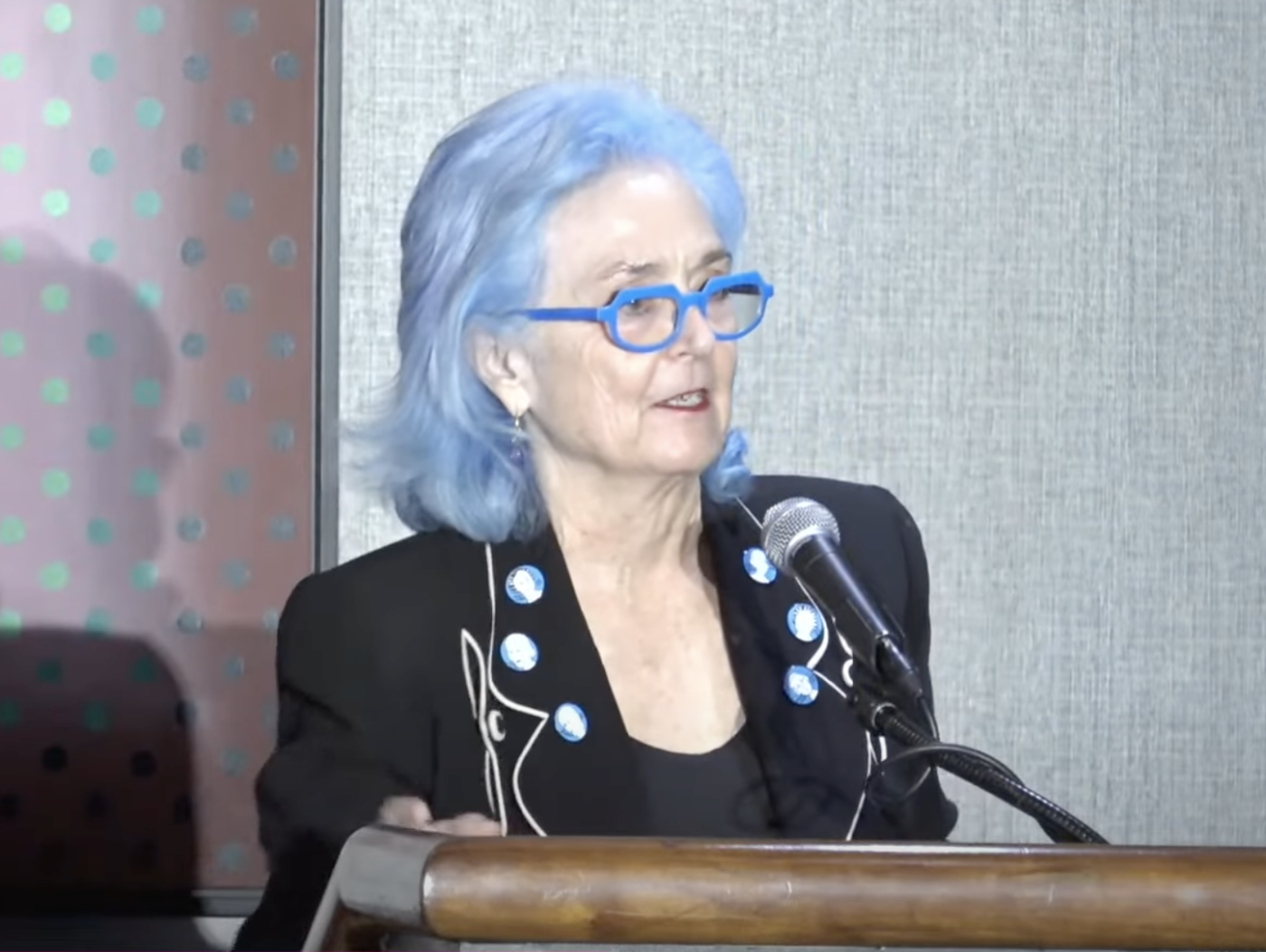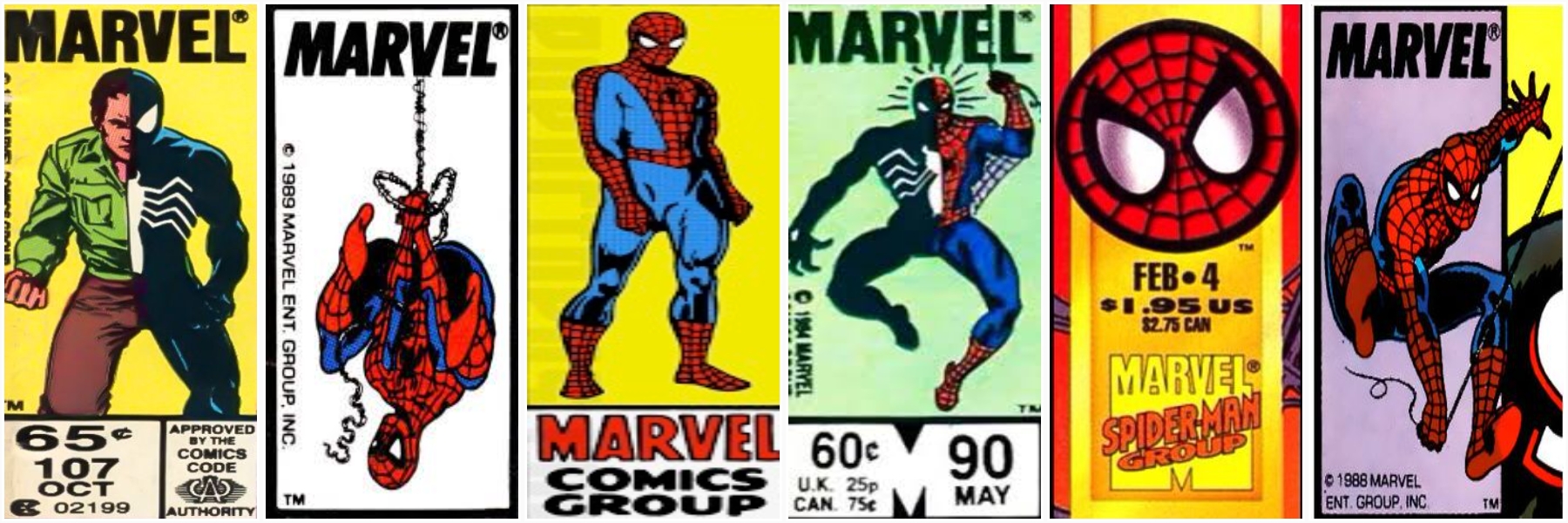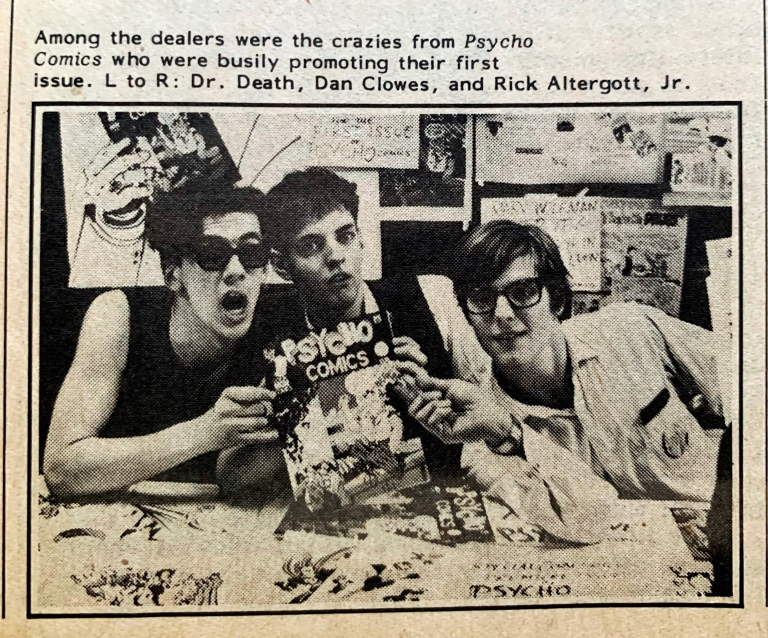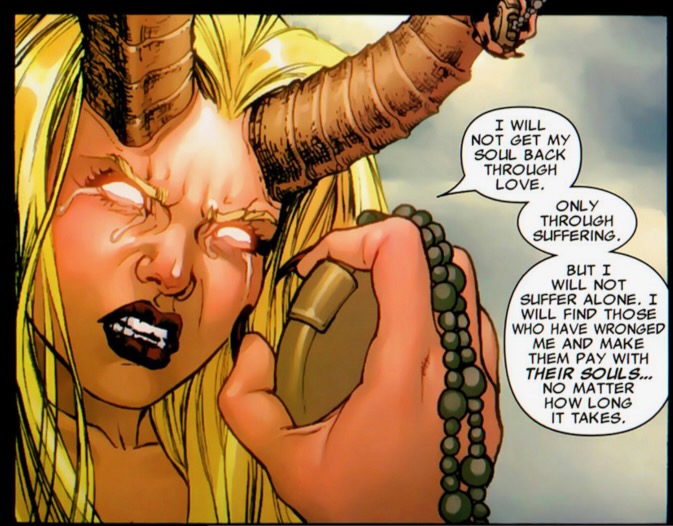In this week’s Wednesday Comics Reviews, the team reviews the historical fiction noir comic Death to Pachuco, an extrapolation of unexplained events in both High Strangeness and Red Book, and more! Plus, Ensign’s Log!
 Death to Pachuco #1
Death to Pachuco #1
Writer/Letterer: Henry Barajas
Artist: Rachel Merrill
Colorist: Lee Loughridge
Publisher: Image Comics – Top Cow
Review by Zack Quaintance
In June of 1943, members of the U.S. Navy fought Mexican-American young people on the streets of Los Angeles. This real historical incident is the backdrop for the new comic, Death to Pachuco, from the creative team of writer/letterer Henry Barajas, artist Rachel Merrill, and colorist Lee Loughridge, and it makes for a riveting noir piece centered around a private eye trying to take action and lower the temperature.
As I wrote in this week’s Top Comics to Buy column, Death to Pachuco was one of several well-done comics this week that made me feel smarter. I knew the book was going to be well-executed. Barajas and Merrill are the same creative team behind the excellent syndicated newspaper strip, Gil Thorp, and they’ve clearly forged a great collaboration in more than a year of working together on those comics.
The art has a period-appropriate feel to it, as it quickly introduces us to the world of 1940s Los Angeles, equally capable of rendering fist fights as it is quieter scenes inside of characters’ homes. And Loughridge’s colors are an excellent complement, helping to emphasize the settings and the moods. Together, Merrill and Loughridge nail sun-drenched LA during the daytime, while also giving many of the night time scenes a great sense of danger and tension. It’s great work.
But really makes Death of Pachuco interesting to me is that the script by Barajas has so carefully considered the time period, the factors that went into the actual historical event, and what it might have really been like to be there on the ground in those days. From this, Barajas and his collaborators craft an engrossing noir story that must might inspire you to learn more about an under-discussed chapter of American history. That’s certainly how it functioned for me.
 High Strangeness #1 1967
High Strangeness #1 1967
Writers: Chris Condon and Daniel Noah
Illustration: Dave Chisholm
Letters: Becca Carey
Publisher: Oni Press/The SpectreVision Company
Review by Clyde Hall
In the course of recent years, creepypasta and cryptid-centric comics have earned a deserved following. Some titles are funny, others fanciful. Some take stabs at frightening us by teetering between paranormal and paranoic themes. But few of the latter stab as true as the new High Strangeness Book One: 1967 premiere from Oni Press and SpectreVision. It’s a book that’s uniquely thoughtful in approach and thought-provoking regarding matters of unexplained phenomena.
And in the spirit of All Hallows’ Eve, it’s laudable that each issue will chronicle a story somewhat based on real life cases of preternatural experiences. In the first issue, that would be the 1967 disappearance of a teen who took photos of an alleged UFO, went public with them, and drew the attention of Men in Black. Not the Men in Black published in 1990 by Aircel Comics, later portrayed cinematically by Misters Jones and Smith, either. The ones who pop up in accounts across UFOlogy, dressed in all-black coats, suits, and hats as ill-fitting as the stoic human shell worn like a second layer of camouflage. Or, as witnesses have claimed, men that seem more like inhuman beings trying to pass themselves off as human while delivering stammered warnings for witnesses to stop looking for flying saucer truths out there. Or else.
Scripters Chris Condon and Daniel Noah drop us into the 1967 world of investigative reporter Harry Kean, Polk Award nominee and contributing writer at Luminary, a Chicago-based culture magazine. Kean’s a Serious Journalist, despite what his editor keeps saying about less-serious features moving issues and keeping the office lights on. It’s why the timely exposé Kean’s preparing on racism in Cicero gets placed on the backburner in lieu of an assignment to rural Grainwake, Indiana. That’s the breadbasket of the Midwest location where teen Daniele Plume has gone missing after selling snapshots she took of a flying saucer to the tabloids.
Kean balks at the reassignment, rails against such an unethical waste of his talent, but finally caves to the truth that none of his recent submitted work has qualified as a cover story for the magazine. In Grainwake, he finds evidence of a possible hoax, but also unnerving evidence that he isn’t the only interested party delving into the mystery. Proving what he can and leaving any further speculation in the bin marked ‘scandal sheets’, Kean returns to Chicago and files a story which captures the public’s imagination and lands him a cover feature credit. His only misgivings are…despite his skepticism, despite his adherence to the highest standards of journalistic integrity, Harry’s not certain that the unknown elements he focused on and then dismissed in Grainwake haven’t followed him home.
In Kean, Condon and Noah present a rational, dedicated kind of protagonist, one who is of his era with both the commendable and unfortunate traits it entails. Harry’s not the reporter you want covering a Christmas charity feel-good story. But he’s absolutely the one you want looking into allegations not all that charity money went for toys and hot meals. Once he has your scent, chances are he’ll hound you until he’s satisfied with the results. And he puts that bulldog determination at work shining spotlights on lapses regarding racial equality and serving the public trust. At the same time, he has sexist tendencies and is in a relationship tailspin with his wife, Annie.
And when Kean uncovers hard truths about the Plume matter, he chases headlong after them. So headlong, he’s unable to panic-stop before being confronted with more nebulous truths, the kind which make even the most practical people reconsider what they’ve always taken for granted. Or gospel. What constitutes reality. And that’s just for starters.
We get a strong secondary protagonist in Daniele Plume running parallel with Kean. Both pursue different kinds of truths but in similar, take-no-prisoner ways. Her story includes a twist I didn’t see coming, either as part of an actual case or a fabrication of one. And I don’t care. It was excellent and brilliant and I’m keeping it as a reminder. Some may dabble, some may peer deeper into the shadowy unexplained. But there are always those true travelers. The ones seeking pathways unmapped and thinner veils between dimensions so they can blaze them and press against them. Ones who stare at the Unknown and dare it to blink first.
Condon and Noah both have a steady bead on what both rural and urban American outlooks were like in 1967. Evading certain expressions or even dialogue beats framed in modern context is a task the best writers can fail at in period pieces. Noah and Condon excel at it here, and without succumbing to the balanced danger of overusing period slang.
And while the wordsmiths forge 1967 in their way, Dave Chisholm provides flawless Polaroid images of the time. It’s an ancient world where, when networks proclaimed, “The following program is brought to you in living color,” they spared no ambient nits proving it. Chisholm’s panels present that luminescence, coupled with the correct models and makes of cars, the right clothing styles, with grounded realism. And for a tale asking readers to confront concepts and anomalies often viewed as less than realistic, that artistic approach is vital.
Combine this with his details, everything from the overwhelming presence of pipes and cigarettes to Aurora-styled model kit boxes to The Invaders TV series title screen, and you will appreciate how much of 1967 Chisolm has transplanted into today. Kean looks like the salesman we bought our living room set from in ‘67, right down to his pipe and business attire, while I watched Dark Shadows on Friedman Brothers Furniture’s color television sets. Grainwake is my little hometown, just with a different city limits sign courtesy of the Lions Club and 4-H. Memories aren’t always stoked with such intensity by a comic book story, but the creative team here manages the feat in both their word choices and their imagery.
In addition, this era fostered a personal interest in Fortean subjects like Bigfoot, alien visitors, ghosts, and the Bermuda Triangle. Since then, I’ve spent considerable time reading about such matters and even doing fieldwork as a hobby by visiting haunted places and interviewing what this title calls ‘experiencers’, people who may have been touched by the supernatural.
This is the other great strength of High Strangeness Book One: 1967. Though I’ve attended MUFON meetings, met people functioning on a whole different level of reality than my own, and questioned much of the Art Bell audience focus, the explanation and categorizations of unexplained phenomena and those who experience it herein is fresh and fascinating. We get analysis and exposition through the storyline of Harry Kean but there’s more in an ending article by podcaster (Euphomet) and researcher Jim Perry.
He addresses the collective Unknown, and our connections with all the secrets within it. He also traces the background and evidence regarding paranormal components of each issue. In doing so, he reveals a philosophical layer that embodies how we study, imagine, and pursue those improbable elements of existence. The folklore and stories shared among ancient people as they gathered around the heat of a campfire are today shared by their ancestors gathered around the screen glow of an internet connection. It’s a web connecting us across lifetimes and locales. In this approach there’s room for skepticism, intuition, witness accounts, and an underlying belief that there really are far more things than Horatio ever imagined.
The only reservation regarding this new title is a tab within the very subject matter it’s exploring. There’s fertile ground for conspiracy theories to grow here. Once considered mostly harmless, the form they can take today feels less so. Maybe you have a friend like I do, one who gets very agitated by the notion ‘They’ could be hiding something from him, and he has a right to know! If you’ve tried towing the line of ‘change what you can, accept what you can’t’ and yet they cannot let go of the rumor that Elvis and JFK are still alive in a Texas convalescent home and that Bubba-Ho Tep was a documentary, maybe they shouldn’t read this. If you are that friend, you also might give it a pass.
For everybody else, if you’re thinking it sounds like High Strangeness Book One: 1967 is a comic you should get for a Halloween reading treat, you’re wrong. High Strangeness Book One: 1967 is THE single comic book you should get for the best Halloween reading treat this year.
 Red Book #1
Red Book #1
Writer: James Tynion IV
Artist: Michael Avon Oeming
Letterer: Tom Napolitano
Publisher: Dark Horse Comics
Review by Jordan Jennings
James Tynion IV and Michael Avon Oeming, creative team that brought us the criminally under- discussed Blue Book, have reunited for the sequel: Red Book. Much like its predecessor, Red Book focuses on the strange and extraterrestrial events of the world and the government conspiracy to hide them from their people. What sets Red Book apart is the focus being on the Soviet Government and the Cold War.
As for Red Book #1 Tynion’s skills as a writer are on display here as he weaves factual information together to form a semblance of a narrative. Tynion’s writing is engaging in how it connects the dots between seemingly unrelated events alongside the geopolitical background. I will say despite it being an engrossing read, it may come off as a textbook for some readers. There isn’t much of a plot for the bulk of the issue. This of course comes from the central conceit of the title being a dossier of extraterrestrial events. Compared to Blue Book, readers may be disappointed with the lack of focus on the characters’ response to the trauma of abduction and the human element to the cold facts. That said, what Red Book lacks in the characterization department it makes up for in the horror and surreal imagery.
Oeming is one of my favorite artists in the industry thanks to his cartoony command of the human form. His distinctive style works to the strength of the comic, especially. The surreal imagery is far more expressive and takes more risk than prior issues. Oeming plays around with Soviet propaganda imagery in these surreal moments. For example Oeming often presents the state apparatus as larger than the individual. Quick shout out to letterer Tom Napolitano for one of the more novel ways to present telepathic conversation in the issue. During the telepathic moments, Napolitano opts to craft the word balloons with a screen tone border over a solid line. While this bubble style isn’t industry changing, it is truly novel.
Red Book #1 is a fascinating read. The story structure may not be for everyone, but if you are a fan of X-Files, geopolitical stories, and weird history in general, this book is for you. The art is surreal and bizarre in the best way possible.
 Super Creepshow Special #1
Super Creepshow Special #1
Writers: Dan Watters, Ryan Stegman and Ed Brisson
Artists: Carmine di Giandomenico, Riley Rossmo, and Andrei Bressan
Colorists: Andres Mossa, Iñaki Azpiazu, and Adriano Lucas
Letterer: Pat Brosseau
Publisher: Image Comics
Review by Jared Bird
Legendary horror anthology series Creepshow branches out into an interesting direction with the Super Creepshow Special #1, which sees a cavalcade of brilliant artists and writers tackle superhero horror stories, paying homage to heroes and stories we all love with a grotesque, violent twist.
The first story, ‘Funeral For A Fiend’ sees Mr Astonishing, the earth’s greatest hero, dies at the hand of his nemesis, Doctor Bastard. His wife, Lisa Lou, struggles to cope with his death, firm in her belief that his alien physiology will revive him in a number of days. When he does return, it’s not quite how she imagined it to be. A cosmic, body-horror take on the legendary Death of Superman, it kicks off the special with a riveting and horrifying story. This is Dan Watters at his best, slowly pushing the concept further and further until a tragic, explosive conclusion that leaves the reader disgusted and disturbed. In a few short pages, he fleshes out the concept well, and Carmine Di Giandomenico does an incredible job with the artwork, taking loving stylistic influence from classic superhero artists and designs before obliterating them with visceral, disgusting body horror. The special is worth a read if only for the strength of this story alone, a jawdropping way to start an issue of Creepshow.
The second story, ‘Grave Ghost: Reborn’ sees a superhero called Grave Ghost, who is betrayed and killed, only to be reborn thirty years later and investigate his own murder. Taking influence from 90’s Image Comics superheroes, this story is less focused on scares than the previous one, instead prioritising a satirical critique of corporations and how much has ‘sold out’ since the 90’s. That’s not to say it doesn’t have its moments, as artist Riley Rossmo leans into the gross-out potential of one of its characters, particularly towards the end of the issue. Ryan Stegman does a good job with the script, and it has a very strong ending, but doesn’t make as much of a bold impression as the previous story. It does feel incredibly timely though, and ultimately is tense and interesting throughout, which enforces its necessary inclusion in the special.
The final story, ‘Growing Pains’ sees a super-serum experiment go awry when the test subject is not exactly someone with a tendency for heroics. A classic mad scientist story, deeply indebted to the classic origin story of The Hulk, it features wonderful art by Andrei Bressan who gives the entire story a classic, haunting feeling as our monstrous protagonist wanders through desolate, dark spaces. Its writing is a bit weaker, through no fault of the books own; it’s simply that this same concept has been done in much greater depth in books like Barry Windsor-Smith’s Monsters, so it doesn’t make as strong of an impression as the other stories in the collection. It’s still fun however, and has a great twist towards the end that takes a seemingly superficial detail and uses it to great effect.
Overall, the Super Creepshow Special #1 is a good collection of horror-based superhero stories that make for a fun experiment on the classic Creepshow formula. Everyone involved is doing good work, and whilst the first story in the special is undoubtedly the strongest, all three are worth reading and have different approaches to the task at hand that make them all feel very distinct to one another. As the season of fears and thrills kicks in full swing, it’s a good choice of a horror one-shot to read and enjoy.
 Marian Heretic #1
Marian Heretic #1
Writer: Tini Howard
Artist: Jose Jaro
Colorist: Walter Baiamonte
Publisher: BOOM! Studios
Review by Khalid Johnson
At a time when Christianity is being weaponized in the states using the arms of white supremacist, sexist, misogynist, imperialist, patriarchy, I think this is in your face and delightfully so.
Marian Heretic #1 was a really hot read. Writer Tini Howard with art by Jose Jaro and colors by Walter Baiamonte kick things off with a bang and while the issue really pops off with fiery action against witches, the horror stirs in the quiet moments, in the more mundane men commanding the church. The church here functions as the state, declaring enemies, waging war, stomping on liberties and freedoms; in particular, those of women.
The convent here decided a faith for themselves outside of an institution that is comfortable with a trinity comprising a single entity but draws the line at an entity worthy of worship being a woman. To save her sisters, Marian goes to serve as a violent extension of the church, a tool fighting witches on their behalf. When bestowing their blessings on Marian so that she can go and fight for them, there’s something deeply unsettling about the performance of it and it’s by design, pulling the criticisms of abuses into clearer focus.
The visual metaphor work was great, just stellar work from Jaro and Baiamonte on every page and then to see the juxtaposition of witches with the men heading the church there was certainly no shying away from making the women sexy and there’s some gratuity but I think the story knows what it is and isn’t ashamed of that. This team really had me filled with anticipation when I finished the issue. Marian Heretic #1 is as gorgeous as it is sharp and it is definitely worth checking out.
Ensign’s Log Star Date 10082025
As IDW’s Star Trek comics continue to expand, Ensign Avery Kaplan has enlisted here to keep a careful log!
 Star Trek: Lower Decks #12
Star Trek: Lower Decks #12
Written by Tim Sheridan, with art by Philip Murphy and Jack Lawrence, inks by Maria Keane, colors by Charlie Kirchoff, letters by Clayton Cowles and design & production by Johanna Nattalie, is part two of the story started in the previous issue.
“Again with the Whales… Again” opens with a quick recap before returning to the U.S.S. Cerritos crew in 1985 San Francisco. This issue includes a great tip of the hat to one of my favorite corners of the canon. And of course, there are plenty of references to Star Trek IV: The Voyage Home, also known as “The One with the Whales.” On top of this, there’s a heaping helping of oceanic dick jokes, including a visual gag that lasts longer than you’d expect it to.
While it sometimes leans more into the comedy side of the “comedy/sci-fi equation” than the show that inspired it did, Lower Decks #12 brings the series’ second time travel story so far to a satisfying conclusion. Artists Murphy and Lawrence, inker Keane and colorist Kirchoff all did a fine job with their respective pages, which, given that the issue is set in 1985, includes many unusual elements for the series. Cowles, as always, executed some excellent lettering, while Nattalie’s design & production remains sound.
While the two-part format has served this ongoing series well over the course of its first dozen issues, I’m excited and intrigued by the promise of a six-part epic story to come.
Special note: the column is a bit abbreviated this week as we prep for New York Comic Con, but we’ll be back to full strength next week as always!
Read past entries in the weekly Wednesday Comics reviews series or check-out our other reviews here!


























 English (US) ·
English (US) ·